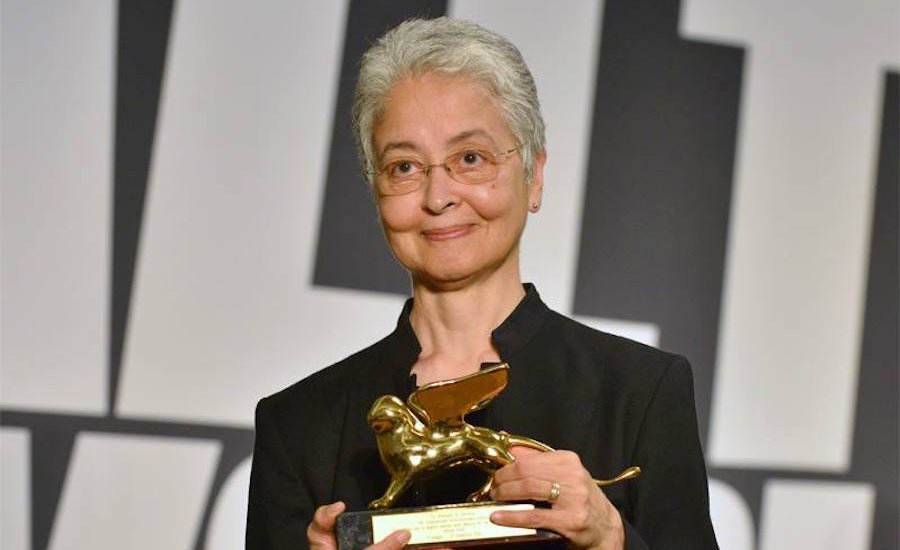Everyone’s Problem: Adrian Piper Tackles the Complexities of Race Relations Head-OnPosted in Articles, Arts, Autobiography, Literary/Artistic Criticism, Women on 2016-01-05 00:50Z by Steven |
Everyone’s Problem: Adrian Piper Tackles the Complexities of Race Relations Head-On
Artspace
2015-12-30
Artspace Editors
 Adrian Piper receiving her Golden Lion from the 2015 Venice Biennale |
The artist and philosopher Adrian Piper’s direct and subtly intellectual approach to unpacking the tangled issues of race, gender, identity, and belonging has inspired a generation of socially-conscious artists across all media, although her impact is just now being fully recognized: she was the recipient of the Golden Lion for best artist at this year’s Venice Biennale, and MoMA has recently announced plans for, in the words of Robin Pogrebin in the New York Times, “the most comprehensive exhibition to date on the conceptual artist,” set to open in 2018. In this excerpt from Phaidon’s Defining Contemporary Art, the curator Connie Butler responds to one of Piper’s most important video and installation works, Cornered from 1988.
Adrian Piper’s conceptual explorations of race and difference have made her a critical influence on subsequent generations of artists exploring race and the construction of identity. By 1988—after two decades in which she moved from a relatively traditional conceptual art practice to using her own body in her work, and to locating her subject matter in the fluidity of identity—she had begun to explore her own struggles with racial identity: namely, people’s assumptions about her race and their corresponding behavior towards her.
The pivotal video installation Cornered addresses this in the straightforward, analytical fashion common to all of Piper’s work. Viewers encounter the artist herself, a light-skinned black woman, looking out at them from a monitor placed in the corner of a room. On either side of it hang her father’s two birth certificates—one that identifies him as white, the other as black. A large table upended in front of the monitor distances us from all this, keeping Piper at a remove in space. Despite this, the artist faces us calmly and begins matter-of-factly. “I’m black. Now, let’s deal with this social fact, and the fact of my stating it, together. Maybe you don’t see why we have to deal with it together. Maybe you think this is just my problem, and that I should deal with it by myself. But it’s not just my problem. It’s our problem.”…
Read the entire article here.



